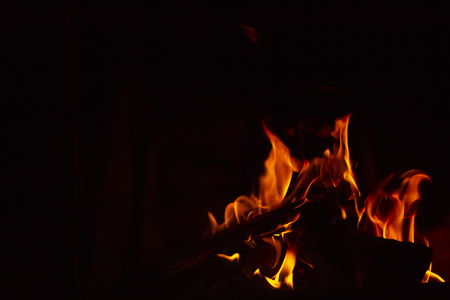Introduction to Bushcraft Cooking in the British Outdoors
Bushcraft cooking is more than just preparing a meal in the wild; it’s an age-old practice rooted deeply within the British countryside. From the ancient woodlands of Scotland to the windswept moors of Dartmoor, bushcraft techniques have allowed generations to thrive and savour simple, hearty food without the luxury of modern stoves or gadgets. This tradition harks back to a time when resourcefulness and respect for nature went hand in hand, whether you were baking bannock over glowing embers or simmering a pot of hedgerow soup. Today, as more people seek authentic connections with the outdoors, bushcraft cooking is enjoying a revival. It brings together traditional skills—like fire lighting, foraging, and improvisational cookery—with a renewed appreciation for sustainability and local ingredients. In this article, we’ll explore how these timeless methods continue to shape outdoor adventures across Britain, celebrating both heritage and modern ingenuity in every bite.
2. Mastering the Fire: Safe and Effective Campfire Building
In the UK, mastering the art of campfire building is central to successful bushcraft cooking, whether you’re preparing a simple bannock or an elaborate feast with foraged ingredients. However, safety and environmental care are paramount, especially in wild spaces governed by strict regulations.
Campfire Safety Essentials in the UK
Before striking a match, always check local by-laws and landowner permissions—open fires are often restricted on common land, nature reserves, and National Trust properties. It’s vital to build your fire away from overhanging branches, dry grasses, or peat-rich soils prone to underground burning. Carry enough water or sand to fully extinguish your fire afterwards. The ‘leave no trace’ principle should guide every action; after cooking, return the site to its original state.
Selecting Suitable British Firewood
The choice of firewood dramatically affects both safety and cooking results. Here’s a quick reference table of commonly found British woods and their characteristics:
| Wood Type | Burn Qualities | Best Use in Cooking |
|---|---|---|
| Ash | Burns well even when slightly green, steady heat, low smoke | Baking bread (bannock), simmering stews |
| Birch | Lights quickly, burns hot and fast, moderate smoke | Quick boiling water or rapid grilling |
| Oak | Slow-burning, high heat output, pleasant aroma | Long slow-cooking (roasts or stews) |
| Pine | Resinous, burns hot but smoky with crackling | Not ideal for food due to resin; use for initial kindling only |
Classic British Techniques for Bushcraft Fires
The most reliable bushcraft fires for outdoor cookery are the ‘criss-cross’ and ‘long log’ fires. The criss-cross fire—built by stacking short logs alternately at right angles—provides a stable bed of embers perfect for baking bannock on a stick or frying trout in a pan. For longer cooking sessions, like stewing hedgerow finds or roasting root veg, the long log fire (sometimes called a ‘hunter’s fire’) lets you adjust heat by moving logs closer together or apart.
Sustaining Your Cooking Fire
Once established, maintain a moderate flame only as needed for boiling or searing. For most bushcraft recipes, it’s the glowing embers—not open flames—that yield the most consistent heat and authentic flavour. Keep spare dry wood covered and add it gradually; avoid overloading your fire which can lead to excess smoke or wasted fuel.
Pro Tip: Ember Management for Consistent Heat
If you’re baking bannock or roasting chestnuts, rake embers out from under the main fire to create small cooking zones with different temperatures—a method favoured by generations of British Scouts and hikers alike.

3. Bannock and Beyond: Traditional Breads and Simple Staples
When it comes to bushcraft cooking in the British Isles, few foods are as iconic—or as practical—as bannock. This simple, versatile bread has sustained generations of travellers, shepherds, and outdoor enthusiasts across Britain’s wild landscapes. Here’s a step-by-step guide for making bannock and other staple camp breads without an oven, using ingredients and techniques rooted in local tradition.
Step 1: Gathering Ingredients
Bannock is wonderfully forgiving when it comes to ingredients. At its simplest, you’ll need plain flour (wholemeal or white), a pinch of salt, baking powder or bicarbonate of soda, and water. Foraged additions like wild garlic, nettles, or berries can add a distinctly British twist. Oats—so integral to Scottish cuisine—can be mixed in for extra texture.
Step 2: Mixing the Dough
In a bowl or directly on a clean surface, combine about two cups of flour with a teaspoon of baking powder and half a teaspoon of salt. Gradually add water, mixing until you have a soft but not sticky dough. If you’re using oats or wild greens, fold them in at this stage. Remember: rustic is best—there’s no need for perfection here.
Step 3: Shaping and Cooking Bannock
Traditional Griddle Method
Flatten your dough into rounds roughly 1cm thick. Heat a heavy-based frying pan (ideally cast iron) or griddle over your campfire embers—not direct flames. Place the dough onto the hot surface and cook for 5–7 minutes per side, turning once golden brown and cooked through.
Stick Baking Method
If you lack cookware, shape the dough into sausage-like strips and wrap them around a peeled green stick. Hold over glowing coals, rotating regularly until cooked—a method loved by Scouts and bushcrafters alike.
Beyond Bannock: Exploring Other Staples
Soda bread is another classic that adapts well to campfire cooking; simply shape the dough into small rounds and cook as above. Oatcakes—beloved in Scotland—require only oats, salt, water, and fat; press them thinly before griddling for crispness.
Ingredient Sourcing Tips
If you’re keen to forage, keep an eye out for young nettle tops (blanch before adding), wild garlic leaves in spring, or even blackberries in late summer to enrich your bannock mix. Always forage responsibly and ensure correct identification before eating wild plants.
Breadmaking over an open fire connects us to centuries-old traditions across Britain. With just basic ingredients and hands-on methods, you’ll discover that flavourful staples are always within reach—even far from a modern kitchen.
4. Foraging for Flavour: Wild Foods and Seasonal Ingredients
Foraging is at the heart of British bushcraft cooking, offering both a connection to nature and an exciting way to expand your outdoor menu. Practised safely and sustainably, it turns a simple meal into a true taste of the countryside. However, it’s essential to know your flora and fungi before tucking in—misidentification can be dangerous, so always err on the side of caution.
The Basics of Safe and Sustainable Foraging
Responsible foraging in the UK means following the Countryside Code and local guidelines. Only take what you can use, leave plenty for wildlife, and never uproot plants without landowner permission. Invest time in learning from reputable field guides or local experts, as some edible species have toxic lookalikes.
Common Edible Wild Foods in the UK
| Plant/Fungi | Season | Edible Parts | Culinary Uses |
|---|---|---|---|
| Wild Garlic (Ramsons) | Spring | Leaves, flowers | Pestos, soups, bannock topping |
| Nettles | Spring–Early Summer | Tender tops | Soups, teas, stews |
| Elderflowers/Berries | Late Spring/Summer (flowers), Late Summer/Autumn (berries) | Flowers, berries (cooked only) | Cordials, fritters, jams |
| Hedgehog Mushroom | Autumn | Fruiting body | Sautéd as side or with grains |
| Bramble (Blackberry) | Late Summer–Autumn | Berries | Desserts, bannock mix-ins, sauces |
| Dandelion | Spring–Autumn | Leaves, flowers, roots (cooked) | Salads, teas, root coffee substitute |
Incorporating Wild Finds into Bushcraft Meals Without a Stove
Your gathered ingredients can transform classic campfire recipes—think nettle soup simmered over embers or wild garlic folded into bannock dough. Mushrooms like hedgehog or chanterelle make excellent additions to one-pot stews or are simply fried on a hot stone. Berries picked at their peak add zing to porridge or can be mashed into spreads. The key is to experiment while respecting nature’s rhythm and bounty; with practice, your bushcraft meals will become as diverse as Britain’s hedgerows and woodlands.
5. Cooking Techniques Without a Stove
When out in the British countryside, preparing a satisfying meal without the comforts of a kitchen is a fundamental bushcraft skill. The landscape itself offers a wealth of opportunities for resourceful cooking. Here are several practical techniques tailored for the local environment, allowing you to transform wild ingredients into hearty fare without relying on modern equipment.
Spit-Roasting Over an Open Fire
One of the oldest and most effective methods, spit-roasting involves skewering meat or fish on a greenwood stick and slowly turning it over glowing embers. In the UK, hazel or willow branches are ideal due to their flexibility and lack of toxic resins. This technique works well for everything from rabbits to trout, imparting a smoky flavour that defines campfire cuisine. Careful attention to fire management—using hardwoods like oak or ash—ensures steady heat and even cooking.
Steaming in Leaves
Leaf-wrapping is a clever solution when pots and pans are scarce. Large, non-toxic leaves such as burdock, dock, or even wild garlic can be found across Britain’s woodlands and hedgerows. Wrapping root vegetables, mushrooms, or fillets of fish in these leaves and placing them among hot coals creates steam inside the parcel, gently cooking the food while retaining moisture and infusing subtle herbal notes. This method is particularly effective for delicate wild greens or foraged fungi.
Hot Stone Cooking
The use of heated stones is an ancient approach that remains practical today. Flat stones are placed in or beside a fire until thoroughly hot, then used as makeshift griddles for bannock bread, pancakes, or slices of game meat. Alternatively, stones can be heated and dropped into containers made from bark or clay to boil water or stews—a technique especially handy near rivers where slate or granite is plentiful.
Adapting to Local Resources
The key to successful bushcraft cooking in Britain lies in observing your surroundings and adapting traditional methods to what’s available. For example, coastal areas might provide seaweed for wrapping or seasoning dishes, while upland regions offer heather twigs that impart unique aromas when used as fuel. Mastery comes from practice and experimentation—each outing is an opportunity to refine your skills and enjoy authentic outdoor meals using nothing but nature’s toolkit.
Safety and Sustainability Notes
Always ensure you harvest materials responsibly and identify plants correctly—avoid using leaves from yew or laburnum trees, which are poisonous. Follow local guidelines regarding open fires and be mindful of leaving no trace after your feast. With these precautions in mind, bushcraft cooking becomes not only a means of sustenance but also a celebration of Britain’s rich natural larder.
6. Favourite Bushcraft Feasts: Recipes and Inspirations
If you’ve ever wandered through a British woodland or rambled across the moors, you’ll know that bushcraft cooking is more than just survival—it’s a celebration of local flavours and age-old techniques. Here’s a curated selection of classic and creative bush meals, all crafted to be cooked in the wild without a stove, drawing inspiration from British bushcraft traditions.
Bannock: The Quintessential Campfire Bread
Bannock is a staple for any bushcrafter in the UK—simple, hearty, and endlessly adaptable. Made with flour, water, salt, and a dash of oil or fat (foraged hazelnut oil if you’re lucky), bannock can be cooked on a flat stone near the fire or wrapped around a stick and toasted over embers. For an authentic touch, mix in wild garlic or nettle leaves for a savoury twist.
Wild Greens Soup
Britain’s hedgerows are abundant with edible greens such as nettles, dandelion leaves, sorrel, and wild garlic. Bring a pot to your campfire and simmer these greens with a handful of oats or barley for body. Season with sea salt gathered from coastal trips or add wild herbs like thyme and wood sorrel for extra depth of flavour—a true taste of the countryside in springtime.
Fire-Baked Potatoes with Foraged Toppings
Nothing beats a potato baked in the embers after a long day outdoors. Wrap potatoes in dock leaves (or foil if you have some) and nestle them deep into the coals. When ready, split them open and top with sautéed mushrooms (chanterelles or field mushrooms if foraged), wild garlic butter, or even pickled samphire for a coastal spin.
Woodland Skewers
Gather sticks to use as skewers and thread on chunks of rabbit (if you’re skilled at trapping), pigeon breast, or locally sourced sausages interspersed with wild onions and bell peppers. Brush with oil infused with hedgerow herbs such as rosemary or meadowsweet before grilling over hot coals. This hands-on method is both practical and deliciously smoky.
Dessert: Bramble & Apple Ember Parcels
For pudding, combine seasonal blackberries (brambles) with slices of tart apple, sprinkle with sugar (if available), wrap in large sycamore leaves, and place directly onto warm embers. After ten minutes, unwrap to reveal soft fruit infused with woodsmoke—an irresistible end to any bush meal.
Bushcraft Brewing: Wild Mint Tea
No feast is complete without something to drink. Pick wild mint leaves from streambanks or meadows, steep them in boiled water using your billy can over the fire, and enjoy this refreshing infusion—a time-honoured British tradition that warms both hands and spirits.
The beauty of these feasts lies not only in their simplicity but also in their deep connection to Britain’s natural bounty. With each recipe, you’re not just eating; you’re engaging in the living history of British bushcraft cooking.
7. Leave No Trace: Responsible Cooking and Environmental Care
Practising bushcraft cookery in the British countryside comes with a duty of care for the environment. Our wild spaces are fragile, and even the most rustic feast can leave an impact if not handled thoughtfully. Here’s how to ensure your outdoor culinary adventures are as sustainable as they are satisfying.
Respecting the Landscape
Before lighting any fire or setting up a camp kitchen, always check local regulations—many areas across the UK have restrictions to protect wildlife and prevent wildfires. Use established fire pits if available, or opt for portable stoves and raised grills to avoid scorching the ground. When foraging, only take what you need and never uproot entire plants; this ensures that wild foods remain plentiful for both animals and future bushcrafters.
Sustainable Cooking Habits
Sustainability starts with preparation. Bring reusable containers and avoid single-use plastics; beeswax wraps and cloth bags are excellent alternatives. Choose foods that produce minimal waste, such as bannock (which requires little packaging) or locally sourced ingredients gathered en route. If using a wood fire, select fallen deadwood rather than breaking live branches, and keep fires small—enough for cooking, not bonfires.
Ensuring Pristine Campsites
After your meal, thoroughly douse any fire with water until cold to the touch, scatter cold ashes well away from water sources, and return rocks or logs to their original positions. Scraps of food should be packed out or buried well away from campsites and trails to avoid attracting wildlife. Before departing, sweep the area for micro-litter—bits of foil, string, or food wrappers—and take everything home with you.
By following these best practices, we honour both our bushcraft traditions and the landscapes that make them possible. Leave every site as you found it—or better—so future adventurers can enjoy their own wild feasts without a trace of those who came before.

